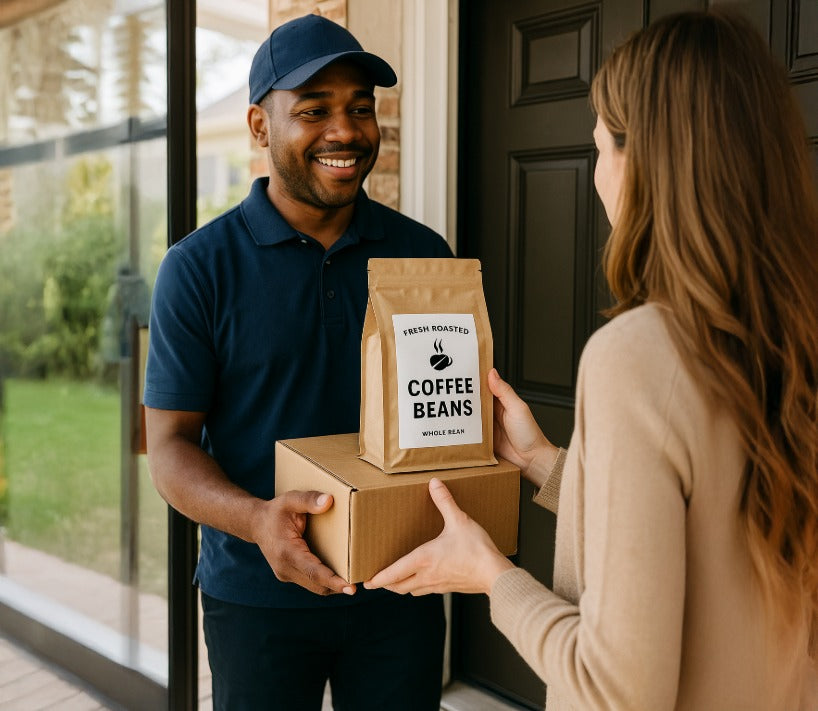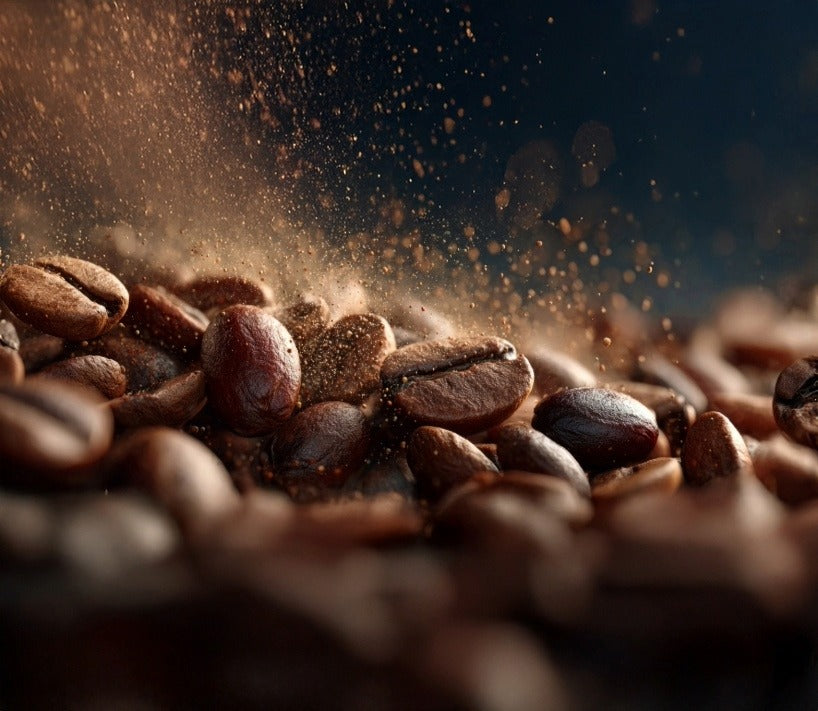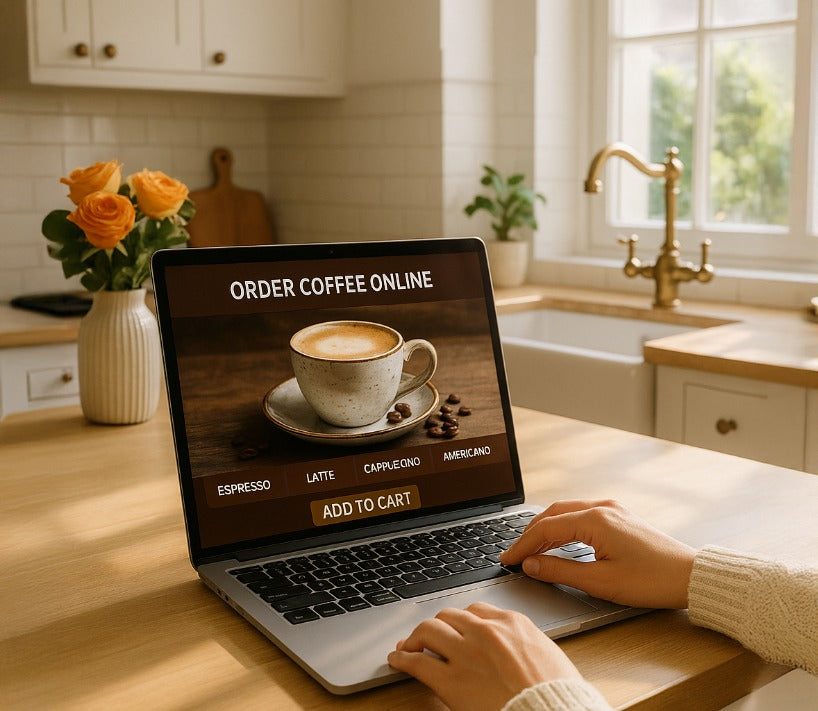Organic vs. Non-Organic Coffee: “Bean” Fooled or Bean Blessed?
June 02, 2025 4 min read
Organic vs. Non-Organic Coffee: “Bean” Fooled or Bean Blessed?
A Tale of Two Lattes
I’m scrolling late-night for the best coffee online, eyes glazed like yesterday’s doughnut. Up pops a banner: “Certified Organic—Taste the Difference!” My inner barista whispers, “Do I really taste the difference, or am I sipping clever marketing?” If you’ve wondered the same—whether you hunt the best craft coffee at home, ask “where can I buy fresh coffee beans near me,” or gift coffee beans as a gift to that friend who already owns three AeroPresses—this blog’s for you. Grab a mug (organic or not—we’re inclusive here) and let’s demystify the green label.
The Bean-Counter’s Guide to the Facts
1. What Exactly Makes Coffee “Organic”?
To wear the USDA Organic badge, farms must ditch synthetic pesticides, most fertilizers, and GMOs, lean hard on compost, shade trees, and natural pest control, and pass inspections by accredited certifiers. USDA
Translation: Mother Nature is the pest-control manager; paperwork is the second harvest.
2. Myth-Busting: “Organic Means Pesticide-Free”
Sorry, BuzzFeed headline writers—organic farms can still use natural sprays (think neem oil, not neon chemicals). They just have to be on the USDA’s “allowed” list. Crockett Coffee That doesn’t make organic bogus; it just means “chemical-free” isn’t literal.
3. Residue Reality Check
Recent lab work found pesticide residues significantly lower in organic beans, and common brewing methods (espresso’s hot-and-fast or Turkish’s simmer-and-sit) strip away more of what’s left. ScienceDirect So yes, your doppio might do double duty—caffeine and residue reducer.
4. Flavor & Antioxidants—Is There a Taste Payoff?
Blind tastings show no universal “organic flavor.” Some batches score sky-high on the Q-scale, others… not so much. Quality still hinges on altitude, processing, roast level, and freshness. (Ever chased the best tasting whole bean coffee only to learn it was roasted two months ago? Same.) Flavor fireworks ≠ automatic; but many organic farms also invest in meticulous processing—so anecdotal yumminess is common.
5. Caffeine Count—Perk Up or Chill Out?
Side-by-side chemical analyses found little difference in caffeine between organic and conventional roasts. ResearchGate If you’re hunting the best espresso beans for that jolt, focus on roast profile (lighter keeps more) rather than certification.
6. Yields, Prices & Why Your Wallet Feels It
Organic yields can run 10-20 % lower, depending on region, because farmers skip quick-fix fertilizers. ResearchGate Lower output + certification fees = heftier price tag. Add in new USDA traceability rules targeting organic fraud (think coffee-cat criminals). AP News Integrity up, costs up.
7. Planet & People Points
Organic plots usually shade-grow more, keep soils sponge-like, and reduce chemical exposure for workers. That’s real, measurable good. Whether you buy specialty coffee near me or order the top coffee delivered from afar, those environmental dividends hitch a ride.
8. Marketing Smoke (or Steam)
Yes, some brands slap “organic” on average-Joe beans and hike the price. But certification audits, residue tests, and stricter import rules keep the worst offenders sweating. Your job? Flip the bag, find:
-
• Clear USDA seal (or EU/JAS abroad)
-
• Farm or cooperative name
-
• Fresh roast date (no stale hype!)
Do that, and the odds tilt in your favor whether you buy specialty coffee online or grab a local bag.
Sipping Smarter in Four Easy Gulps
-
Match Values to Beans
Eco hero? Organic’s your league. Value hawk? Conventional from transparent roasters might serve your wallet—and still taste stellar. -
Freshness > Everything
The most pristine organic bean tastes like cardboard after six months in a warehouse. Seeking the best small batch coffee? Choose roasters who print dates and ship within days of roast. That applies whether you order best coffee for non coffee drinkers (low-acid, mellow) or the hardcore fruit-bomb single origins. -
Ask for Third-Party Proof
Direct-trade, Rainforest Alliance, or Q-grader scores (think 84+ points) add layers of trust. Great for curious sippers or hunters of presents for coffee lovers—nothing says “I care” like verified quality. -
Experiment & Record
Keep a tiny notebook—or a phone note—for each bag: origin, organic or not, brew method, flavor notes. You’ll quickly discover what makes your best craft coffee online experience pop. Hint: sometimes it’s a washed Guatemala at 15 : 1 ratio. Sometimes it’s a natural Ethiopia that tastes like blueberry pancakes.
Final Pour-Over
So, is organic coffee a saintly super-bean or clever marketing? It’s both simpler and more nuanced:
-
Health & Environmental Edge: Lower residues, better soil practices—check.
-
Flavor Wild Card: Great coffee is a triangle of origin × processing × freshness; organic is an extra side, not the whole pyramid.
-
Cost Reality: Certification and lower yields make it pricier, but you fund skinnier chemical footprints and fairer labor conditions.
-
Hype Alert: Labels can lure; dates and transparency keep you safe.
Armed with these beans of wisdom, you can stride into your next café—or your next best craft coffee at home brew session—confidently. Whether you stick to tried-and-true conventional or explore organic micro-lots, you’re now the caffeinated Sherlock who sees past buzzwords.
And that, dear reader, is grounds for celebration. ☕️
Also in Best Coffee To Buy Online Education

Best Fresh Roasted Coffee Delivery Online
November 28, 2025 4 min read
I roast the best tasting coffee at home for you! I use 100% electric equipment, so no hydrocarbons here. Best fresh roasted coffee delivery starts with high-scoring specialty coffee online.

Which Roaster Makes Better Coffee: Gas or Electric?
November 27, 2025 4 min read
Why electric drum roasters produce cleaner, sweeter, more consistent coffee—especially the kind you want when buying fresh roasted coffee beans online or trying to make the best tasting craft coffee at home.

Biggest Coffee Buying Mistake at Home
November 26, 2025 4 min read
Learn why the roast date matters and how to buy fresh, high-quality specialty coffee online. No guesswork when you order coffee online with me. I only stock, roast, and process the best tasting craft coffee at home. I am YOUR personal roaster.
